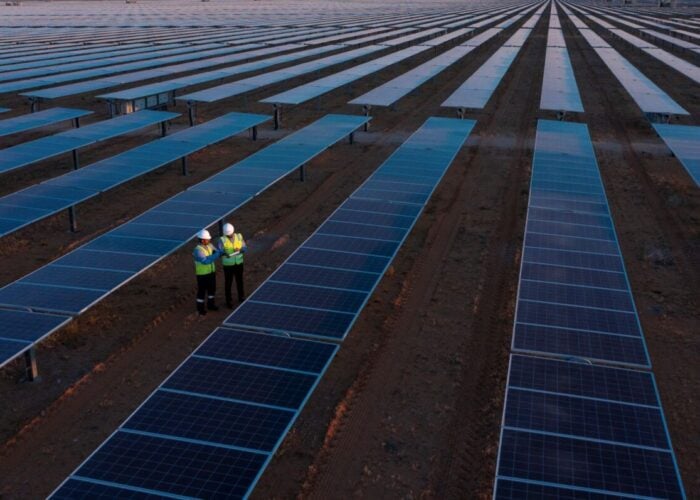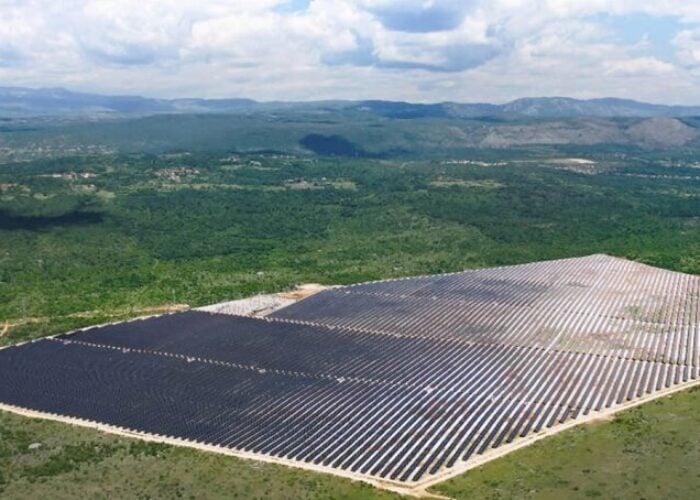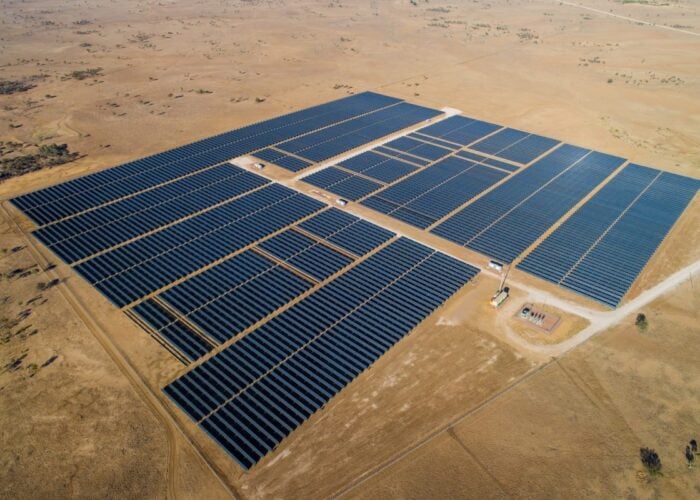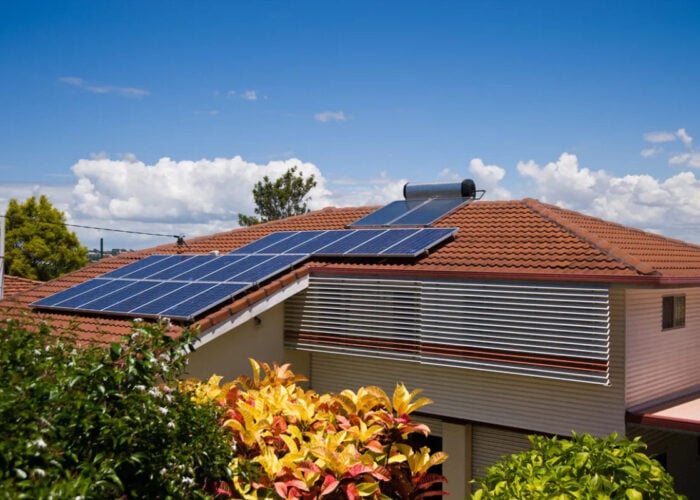Concern about copper prices is not a recent phenomenon in the history of electrical generation and delivery. In 1879, Thomas Edison calculated that he would need to spend $18,000 to test his first ever electric light system around his lab in Menlo Park, New Jersey.
Since 2002, the world's third most ubiquitous metal has risen from below a dollar a pound to $3.83/lb as the market has become increasingly “tight”. Copper is often regarded as the barometer of the global economy: prices crashed in 2008 and demand is now led by China. Some 42% of the world's copper is used in the electrical and electronic sectors, 28% in construction and 12% in transport. So it comes as no surprise that demand for copper is expected to expand by 12% this year in China.
Unlock unlimited access for 12 whole months of distinctive global analysis
Photovoltaics International is now included.
- Regular insight and analysis of the industry’s biggest developments
- In-depth interviews with the industry’s leading figures
- Unlimited digital access to the PV Tech Power journal catalogue
- Unlimited digital access to the Photovoltaics International journal catalogue
- Access to more than 1,000 technical papers
- Discounts on Solar Media’s portfolio of events, in-person and virtual
Renewable technologies, electric vehicle deployment and smart grids are anticipated to accelerate global demand for copper yet further as the economy recovers.
California's solar industry suppliers, developers and utilities are not yet lamenting the price or supply of copper as Edison did at the birth of the electrical industry. Aside from its potential use in PV panels, copper is being increasingly used in solar systems. California's solar industry could experience growing pains due to the costs of wiring, cabling and electronics as the state moves towards 33% of renewable electricity by 2020 under the Renewable Portfolio Standard.
Bill Kramer, acting group manager at the Distributed Energy Systems Integration project at the National Renewable Energy Laboratory, has been working on power inverters for the PV industry for four years.
“Copper bus bars in residential could be just a lug. At utility scale, or 50kW and above, the bigger you get the more impact the copper will have in the overall price because once you go to larger systems you've got to have copper bus bars that are as thick as the handle on a butter knife handle and 1-2 inches wide.
“Copper will affect the larger inverter systems that use isolation transformers. But Where copper prices have the most effect are the wires that connect the PV panels to the inverters – that distance that will have a larger impact on system cost than the copper that's inside the inverter.”
Just as prices of copper have soared, polycrystalline prices have declined, creating a perfect storm that has thankfully levelled off the balance of systems, said Steve Levy, vice-president of sales and global marketing, at Advanced Energy, a thin-film solar and power conversion manufacturer headquartered in Colorado.
“Copper has definitely been on the map and it's been rising as percentage of the overall cost,” he said. “All of the raw materials that make up the balance of systems continue to go up. I haven't seen anything go down other than the actual panel costs. As a result, inverters and the cabling and wiring from the arrays have seen costs rise relative to the decrease in other components in the balance of systems.
“Ironically, in the beginning of 2011 a lot of projects got delayed because purchasers were watching panels dropping in price every month and at 5MW you were saving $50,000 a month just delaying the start of a project. You could pay for the inverter just by delaying acquisition.
“Inverters were typically in the 9%-10% range of the total cost of the system. But now they're in the 9%-12% range and rising. We haven't seen a real decline with the inverter pricing.”
After four years of working on power inverters at NREL, Kramer will launch a prototype to demonstrate greater reliability and new “feature content” functionality for smart-grid applications that should also drive down costs.
“Many PV installers were making unreliable inverters at expensive, low volumes. Now some of the bigger companies are getting involved in making inverters. But if you're only making 4,000 of them a year you're not necessarily going to be able to afford a large programme to test the unit.
“If you can find high volume parts and put them inside the inverter, you should be able to reduce the costs of the inverter.”
PV inverter manufacturers are gearing up for high volumes. Of Advanced Energy's $516m in revenue last year, $328m was the thin-film business, with the remainder from sales of inverters. But that split could swell in favour of its utility-scale inverters. An IHS iSuppli report last year forecast that worldwide shipments of solar power inverters would rise from 4 million units in 2011 to 30.2 million units by 2015.
Recent data from SolarBuzz indicates US inverter prices at $0.711 per continuous watt. At those rates, percentage points in efficiency over the lifetime of a project become critical, said Levy.
“Transformer-less architecture typically has higher efficiency. Our Solaron line is transformer-less and it's 98% efficient. 1% or half a percent efficiency over 20 years on thousands of panels – you can see the maths.”
Reducing the use of copper cabling will also be critical to reducing future costs, said Levy. Solaron's Remote PV Tie (RPT) claims to reduce costs by lowering the amount of heavy gauge “home run” the length of cable that goes from the inverters and the arrays (see Figure 2).
“As you look at the individual BoS components, if you can innovate as a manufacturer and come up with an application that could reduce the home runs – you're talking about the potential to drive the BoS costs down,” he said.
In the wider utility-scale solar industry, a new power struggle is emerging over who should end up owning the inverter.
Julia Hamm, president and chief executive officer of the Solar Electric Power Association, said: “Will utilities in the future just have an interest in owning the inverter? It's a concept SEPA has heard talked about for more than five years. SEPA is starting to see that idea gain some traction. But more utilities are investigating whether they can make it work because they think there's value in it. They want that control and access and the inverter gives them that. If I were an inverter manufacturer right now I'd be all over the utilities talking to them about this idea to see if there is a way they can structure a way which makes sense for everybody. We could see it in the future.”
NREL's Energy Systems Integration Facility funded by the Department of Energy will open later this year to test, among other things, how invertors interact in a smart grid using a simulator which varies voltage and frequency up to 1MW (see Figure 3).
“Your TV assumes a certain voltage and frequency range and if it goes too far out of that you can destroy components in the appliance,” said Kramer. “We're trying to show the world how we can best work these systems in an integrated fashion so we can have a much higher impact and much smarter grid. So the inverter becomes a central basis because that's our primary source of power.
“The crux is that PV is variable with respect to clouds and weather and we need to find ways to tie this technology together with load and other sources like batteries so that what a utility sees is more stable from a power perspective. If you had the system with a battery you could have been outputting power during that cloudy event. What the utility sees is not a big variant in the power being delivered.
“Being able to integrate these systems we believe is the future direction for increasing the penetration of renewables onto the grid. We've got to get smarter about this because of the variability of the resources.”
As the buck stops with utilities in meeting California's 33% RPS goal and the state trends towards more distributed generation, controlling electricity through the inverter could be increasingly important for utilities.
“If I were at a utility I would certainly want to own the inverter because like the computer room, the inverter is the one product where you can do command and control remotely,” said Levy. “Remote control on the software side is paramount for the utilities to gain control over the whole array by managing all of the inverters as a system like a plant controller.
“We're making a pretty good bet in that direction. If solar is going to accelerate as a percentage of the total grid, you have to give the utilities the right controls.”







